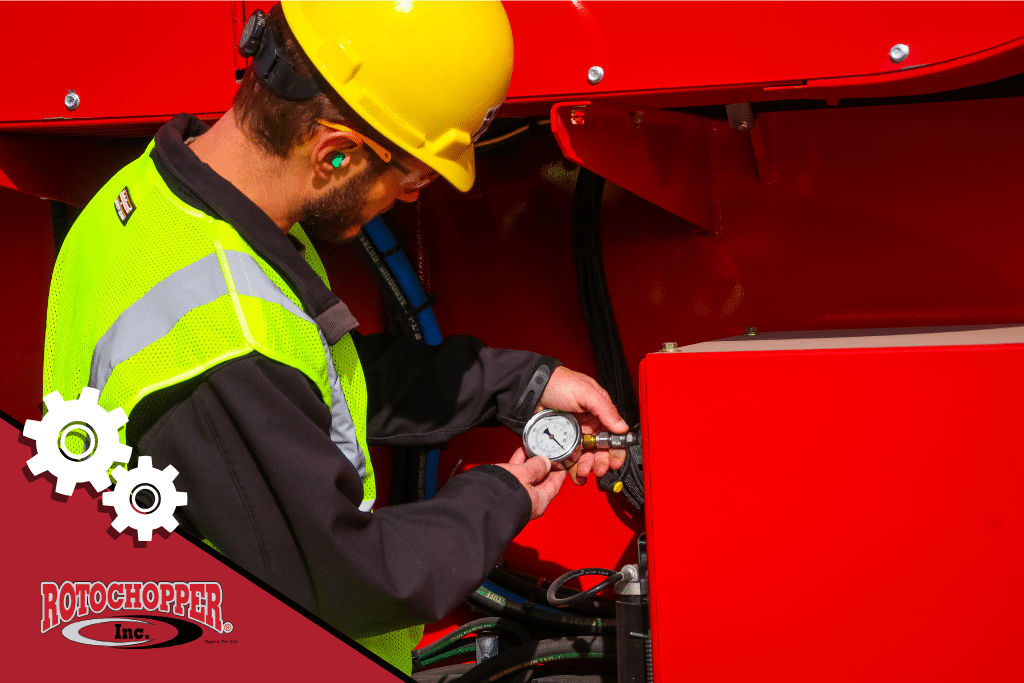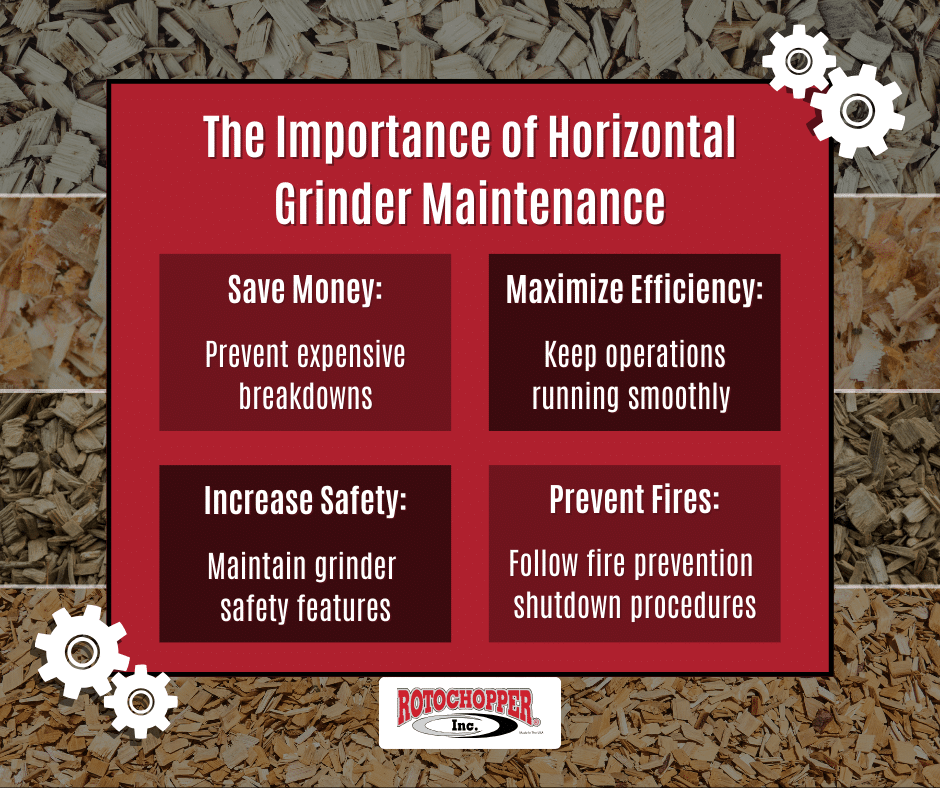
Like any piece of heavy machinery, an industrial horizontal grinder’s wear parts will not last forever. Through daily use and occasional encounters with ungrindable objects, wear parts degrade, eventually forcing operations to a standstill while repairs are made or replacements are installed.
Regular horizontal grinder maintenance and thorough cleaning don’t just increase the longevity of your grinder and its wear parts—they also save your operation money, keep employees safe, and boost efficiency across the board.
Save Money with Regular Inspections
Staying on top of horizontal grinder maintenance through a combination of daily inspection and a planned preventative maintenance program extends the life of a grinder’s internal components, making costly repairs and replacements less frequent. Regularly cleaning and inspecting critical grinder components, like sizing screens and replacable mounts, also helps operators address concerns before they take the grinder offline, minimizing downtime and maximizing grinder productivity.
Check out our blog on the top three wear parts to inspect regularly here.
Maximize Efficiency with Daily and Preventative Maintenance
Malfunctioning or worn-out horizontal grinder parts produce substandard end products and lead to more frequent or expensive breakdowns. Regular grinder cleanings help mitigate the buildup of dirt, sawdust, organic material, and other debris, preventing blockages that can reduce the equipment’s overall efficiency. Likewise, daily grinder inspections help ensure small concerns and aging wear parts are addressed before they compound into expensive and disruptive issues.
When parts do eventually wear out, product specialist experts can quickly and easily replace vital grinder components, maximizing uptime and keeping equipment in service longer. Product specialist experts also perform routine optimizations on equipment—like aligning conveyor belts and adjusting amperage draws—which help your operation run at peak capacity and ensure your grinder can process feedstock down to the size your industry demands.
Increase Safety with Shutdown Procedures
Grinders that are well maintained operate predictably—when they’re not, their reliable, built-in safeguards can fail, increasing the risk of an accident. Preventative and daily maintenance, as well as regular grinder cleaning, ensure all safety features are operating as intended and help keep employees safe on the job.
In addition to scheduling regular equipment checkups, operators should compile a daily checklist to ensure their equipment is safely shut down before employees leave the worksite. The specifics of your checklist will differ depending on your industry, but your shutdown procedures should include removing debris and having an employee watch the grinder for 30 minutes after shutdown.
Prevent Fires with Regular Grinder Cleaning
As with any piece of heavy machinery, it’s important that horizontal grinder operators follow proper fire safety protocols as part of their daily operations. Before starting up and after shutting down, operators should thoroughly clean all hot surfaces to prevent the buildup of combustible debris. Most importantly, site managers should store combustible materials away from grinders and other heat producing equipment to minimize the chances of ignition.
Read our guide to horizontal grinder fire safety and prevention here.
Contact Rotochopper to Schedule Horizontal Grinder Maintenance
For operators in the waste reduction industry, daily and preventative horizontal grinder maintenance should always be a priority—both to improve operational efficiency and keep employees safe. To maximize the life of their equipment, project managers should develop a comprehensive maintenance plan that includes daily startup and shutdown procedures, as well as maintenance checklists for operators to use on the job.
Rotochopper offers a comprehensive preventative maintenance program designed to keep our grinders in excellent condition for as long as possible. Our preventative maintenance experts travel across the country to ensure equipment is operating at peak efficiency. We train operators on proper safety protocol and provide guidance for project managers hoping to compile their own maintenance checklists.
Contact us today to schedule an onsite maintenance visit with a Rotochopper specialist.

